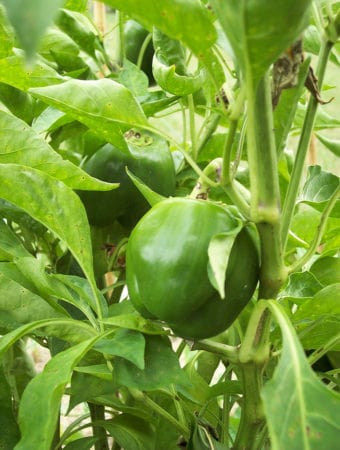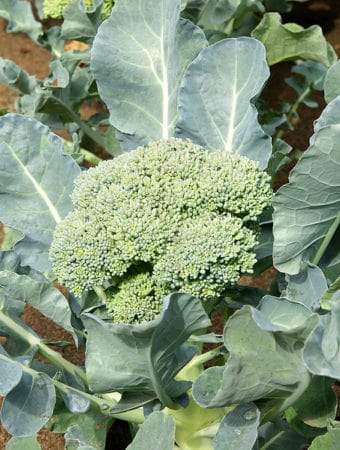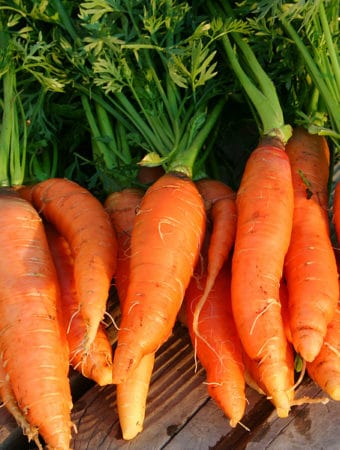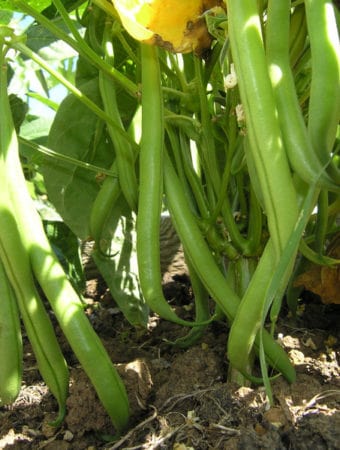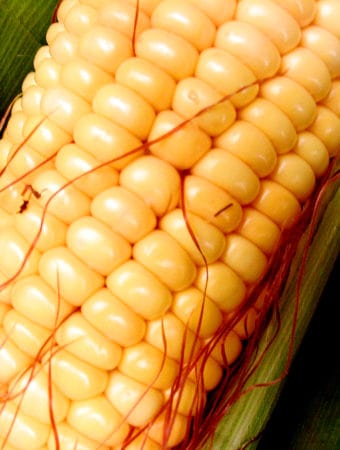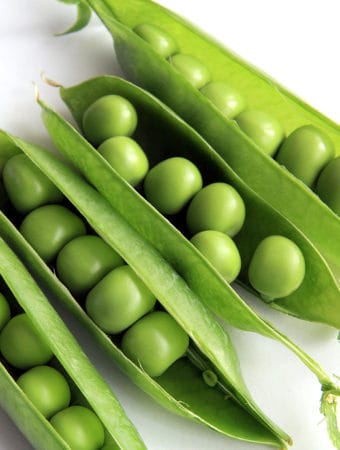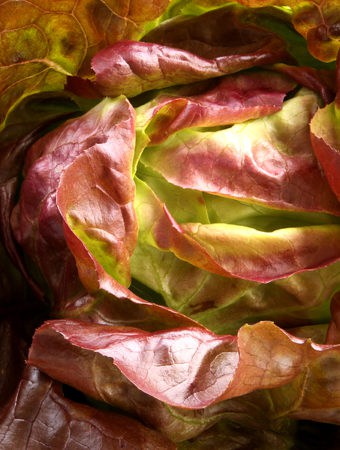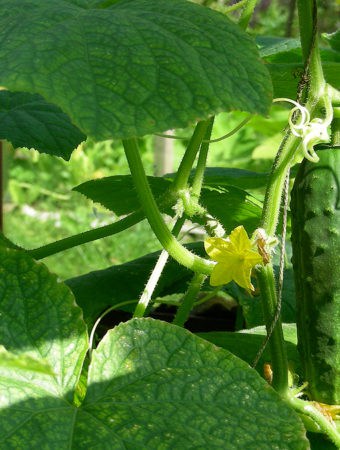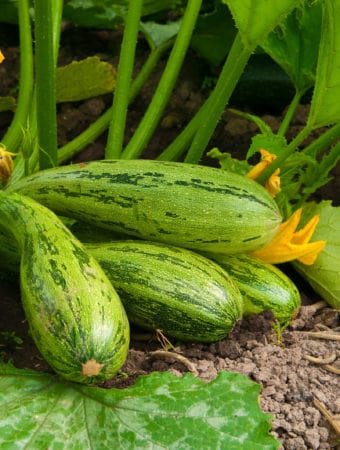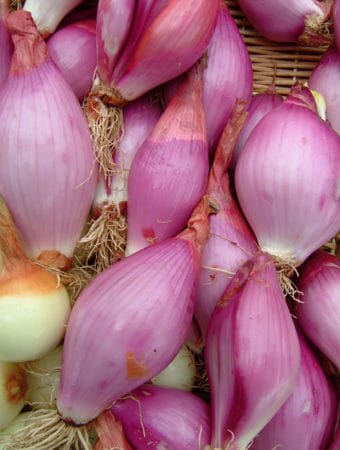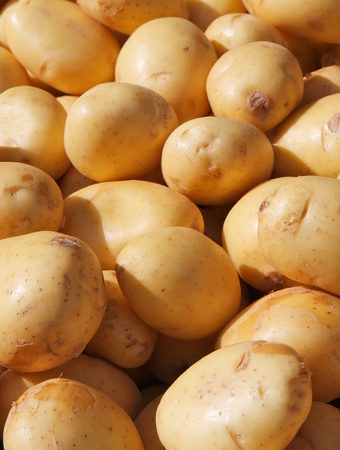Plant watermelon seeds in the garden when the soil temperature reaches 70°F (21°C), usually 2 to 4 weeks after the last frost in spring. Watermelon is a tropical plant and demands a long, warm, dry growing season with temperatures between 70° and 80°F (21-26°C) during the day and 60°-70°F (16-21°C) at night. Watermelons require 75 to 90 days to reach harvest.
Watermelon seeds can be started indoors with bottom heat and a soil temperature of 75°F (24°C). However, watermelons started indoors will not develop the deep taproots of direct-seeded plants. The unnatural root development on transplants means more irrigation will be required once transplants are set in the garden.
Grow watermelons in light, fertile, deep loam, or sandy soil. The soil should be well-drained. Add aged compost or well-rotted manure to the soil and turn the soil to a depth of 8 inches (20cm) or more. Watermelons are heavy feeders. Add bone meal, greensand, or granite dust to the planting hole.
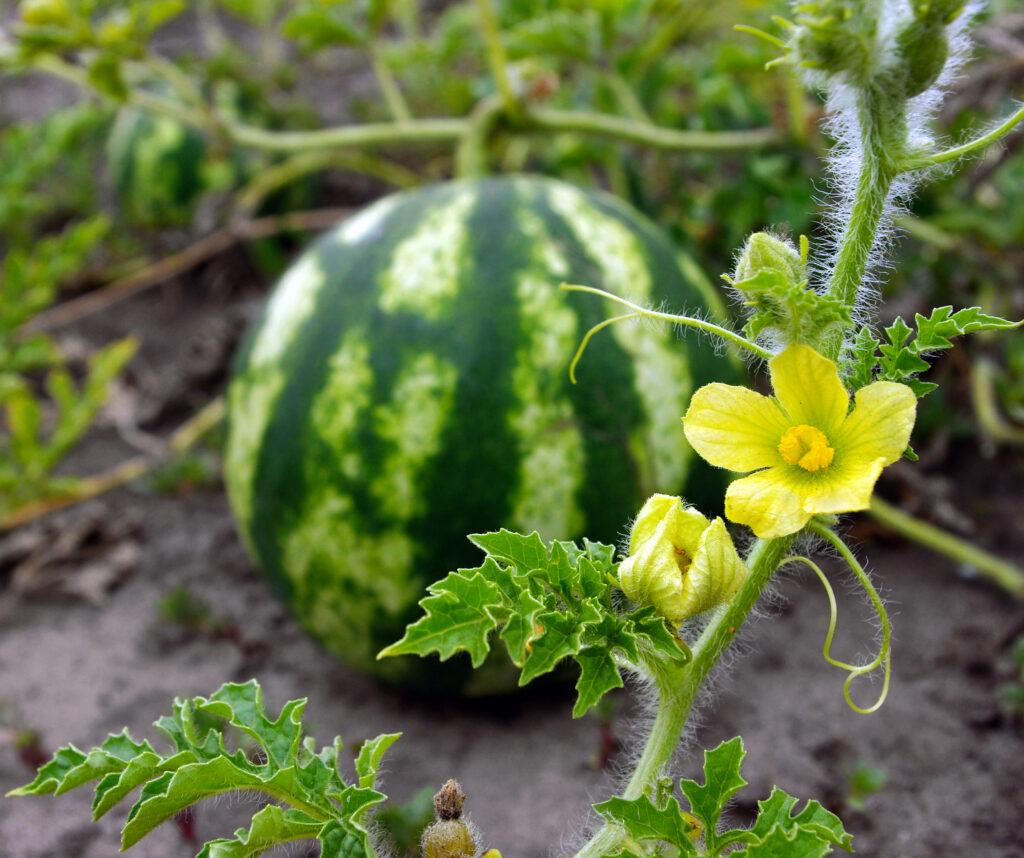
Planting watermelons on mounds or hills is one way to ensure the soil is sufficiently warm for watermelons. The higher the mound the warmer the soil. Vines can also be trained down and around the hill rather than letting them run through the garden. Vines commonly grow 6 to 12 feet (2-4m)long. Some small varieties can be grown in a container or trained to a trellis.
Watermelons are ripe when they make a “punk” sound when struck by knuckles. A “pink” or “pank” sound means the melon is not ripe—according to Mark Twain.
Watermelons are easy to grow from seed. They simply require warm soil, a long warm growing season, plenty of space, and plenty of water.
Watermelons with red flesh are most common, but there are also watermelons with white, yellow, orange, and pink flesh.
Here is our guide to growing watermelons from seed. We also give you a watermelon growing calendar to help you get started.
Watermelon Growing Quick Tips
- Sow watermelon seeds or set plants directly in the garden in spring 2 weeks after all danger of frost has passed after the soil has warmed to 70°F (21°C).
- Watermelon seeds can be started indoors 6 to 8 weeks before plants are set out.
- For the sweetest flavor, watermelons require a long, hot growing season and plenty of room; watermelon vines require 10 to 15 feet of growing room.
- Watermelons mature 70 to 100 frost-free days after sowing depending on the variety.

Watermelon planting details
- Sowing depth: ½ -1 ½ inches (12mm) or slightly more
- Space between plants after thinning: 2-6 feet (30-45cm)
- Days to sprout: 4-10
- Days to harvest: 75-90
- Storage period: 1 week refrigerated
- Seeds per 100-row feet: 1 ounce
- Suggested varieties: Black Diamond (90 days), Charleston Gray (85 days), Crimson Sweet (80 days), Sugar Baby (75 days).
Watermelon seed starting Basics
- Seed-sowing depth: 1inch (3 cm)
- Seed starting tips: Sow 2-3 seeds per individual peat pot or biodegradable pots indoors. Use a sterile seed starting mix or potting soil. Bottom heat is not necessary but it will speed germination. Use low heat if you use a heat mat.
- Pre-sprouting seeds: Lay the seeds on a damp paper towel, roll up the towel, and place it in a plastic bag; seal the bag and keep it in a warm place until seeds germinate; then place seedlings in individual pots.
- Seed-starting soil temperature: 80-90°F (27-32°C)
- Indoor seed starting time: Start indoors as early as 4 weeks before the last frost in spring; not sooner than 3-4 weeks before transplanting outdoors. Thin seedlings to the strongest plant after seedlings have formed their true leaves.
- Light requirements: Full light
- Transplant time: Transplant outdoors two weeks after the last frost. Avoid disturbing the roots when transplanting.
- Direct sowing time: Plant seeds after the danger of frost is past and when temperatures average 70-85°F (21-29°C). Use black plastic sheeting or black plastic mulch to warm the soil early in the season and conserve moisture in hot weather. Protect young plants with floating row covers or cloches.
- Spacing in the garden: Plant in hills, one or two plants per hill, spaced 6-8 feet (2-2.5 m) apart. Amend the garden soil with aged compost or aged manure ahead of planting.
- Seed germination: 3-10 days
- Watermelon flowers: Monoecious (male flowers and female flowers on the same plant); the first female flowers to appear are the ones most likely to set fruit.
- Pollination: Insects, bees
- Cross-pollination: Can cross-pollinate with other varieties. Cage plants or bag blossoms to prevent cross-pollination. Hand-pollinate or introduce insects.
- Isolation distance: 800 feet to 1/2 mile; isolate plants if you plant to save seeds
- Days to maturity: 70-110 days from planting depending on the variety. Be sure to consult the seed packet for days to maturity and mark your garden calendar. For large fruit cull the growing fruit so that only one or two remain on the vine.
- Harvest time: Harvest when the fruit rind that touches the ground turns yellow; harvest when the tendril closest to the fruit turns dry and black. You can also test watermelon ripeness by rapping the melon with your knuckles; if if sounds hollow it’s ready. Use a sharp knife to cut ripe fruit away from the vine. Decrease water a few days before harvest to increase the fruit sugar content.
- Seed saving: Save seeds from fruit with the best flavors, preferred shapes, and colors
- Seed processing: Scoop out seed; rinse away pulp and dry for 1 week. Seeds should be thoroughly dry before storing.
- Seed vitality: 5 years. Store seed in a cool, dry, sealed container.
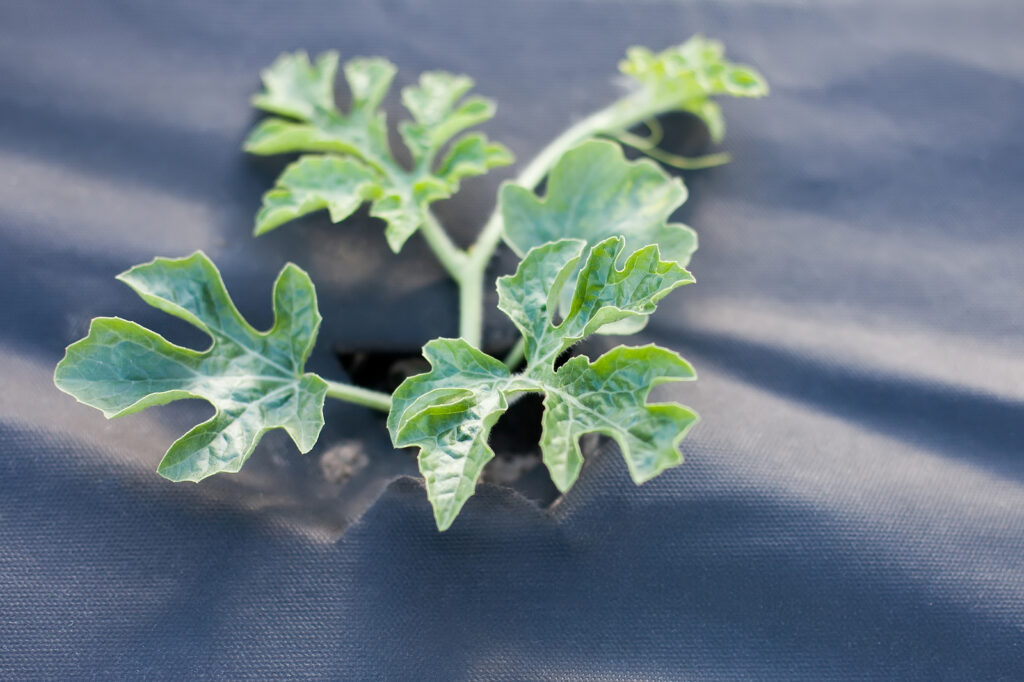
Watermelon sowing and planting tips
Start watermelon seed indoors 3 to 4 weeks before transplanting seedlings to the garden; set out transplants 2 or more weeks after the last frost in spring. (Seedless watermelons are hybrids; these cultivar plants are most easily grown from cultivar transplants purchased at the garden center.)
- Grow watermelons from seeds or seedlings.
- Seed is viable for 4 to 5 years.
- Sow seed indoors in peat pots filled with seed starting mix. The indoor temperature should be between 80-90°F (27-32°C) until germination. Grow watermelon seedlings at 75°F (24°C).
- Direct sow watermelons in the home garden in spring after all danger of frost has passed and the soil has warmed to 70°F (21°C). In warm-winter regions, sow watermelons in midwinter for harvest in early summer.
- Watermelon seeds will not germinate at a soil temperature below 65°F (18°C).
- Sow seed ½ inch (13 mm) deep.
- Watermelon seed germination occurs in 3 to 10 days at 80°F (27°C) or warmer.
- Transplant seedlings to the garden bed after the soil has warmed to at least 70°F (21°C).
- Plant on mounds or hills 12 to 24 inches (30-60 cm) high, space mounds 10 feet apart; vines can easily spread 10 to 15 feet.
- Watermelons can be grown in containers; use a 10 to 15-gallon container and set a trellis in place to grow the vine up. Small watermelons are easily grown on trellises.
- Water to keep the soil from drying. Mulch around plants to conserve soil moisture. Watermelons have a very high water content; the soil must never go dry.
- Fertilize with fish emulsion or a soluble complete fertilizer at half strength.
- Add aged compost to planting beds in advance of transplanting. Watermelons like sandy, humus-rich soil.
- Watermelons prefer a soil pH range of 7.0 to 8.0. Perform a soil test before planting.
- Grow watermelons in full sun for the best plant growth and yield.
- Avoid planting watermelons where cucumbers or squash have grown recently.
- Common pest enemies include aphids, cucumber beetles, flea beetles, squash bugs, squash vine borers, slugs, and snails.
- Common diseases include bacterial wilt, fusarium wilt, downy mildew, powdery mildew, and cucumber mosaic.
Interplanting: Plant watermelons with bush beans, corn, dill, eggplant, lettuce, cucumbers, squash, and tomatoes.
Container Growing Watermelon: Watermelons are not a good choice for container growing. They require significant room to spread and grow.
Watermelon planting calendar
- 6-8 weeks before the last frost in spring: start seed indoors for plants that will be transplanted into a plastic tunnel in 4 weeks.
- 4-5 weeks before the last frost in spring: start seed indoors for seedlings to be transplanted into the garden.
- 2-4 weeks before the last frost in spring: transplant seedlings to a plastic tunnel.
- 1-2 weeks after the last frost in spring: direct sow or transplant seedlings into the garden; minimum soil temperature is 60°F.
x
Melon planting dates
(These dates are for the Northern Hemisphere)
| Average date of the last frost | Planting dates |
| Jan. 30 | Feb. 15-Apr. 1 |
| Feb. 8 | Feb. 15-Apr. 15 |
| Feb. 18 | Mar. 1-June 1 |
| Feb. 28 | Mar. 10-June 1 |
| Mar. 10 | Mar. 20-June 1 |
| Mar. 20 | Apr. 1-Jun3 1 |
| Mar. 30 | Apr. 10-June 15 |
| Apr. 10 | Apr. 20-June 15 |
| Apr. 20 | May 1-June 1 |
| Apr. 30 | May 10-June 1 |
| May 10 | May 20-June 10 |
| May 20 | June 1-20 |
| May 30 | |
| June 10 |
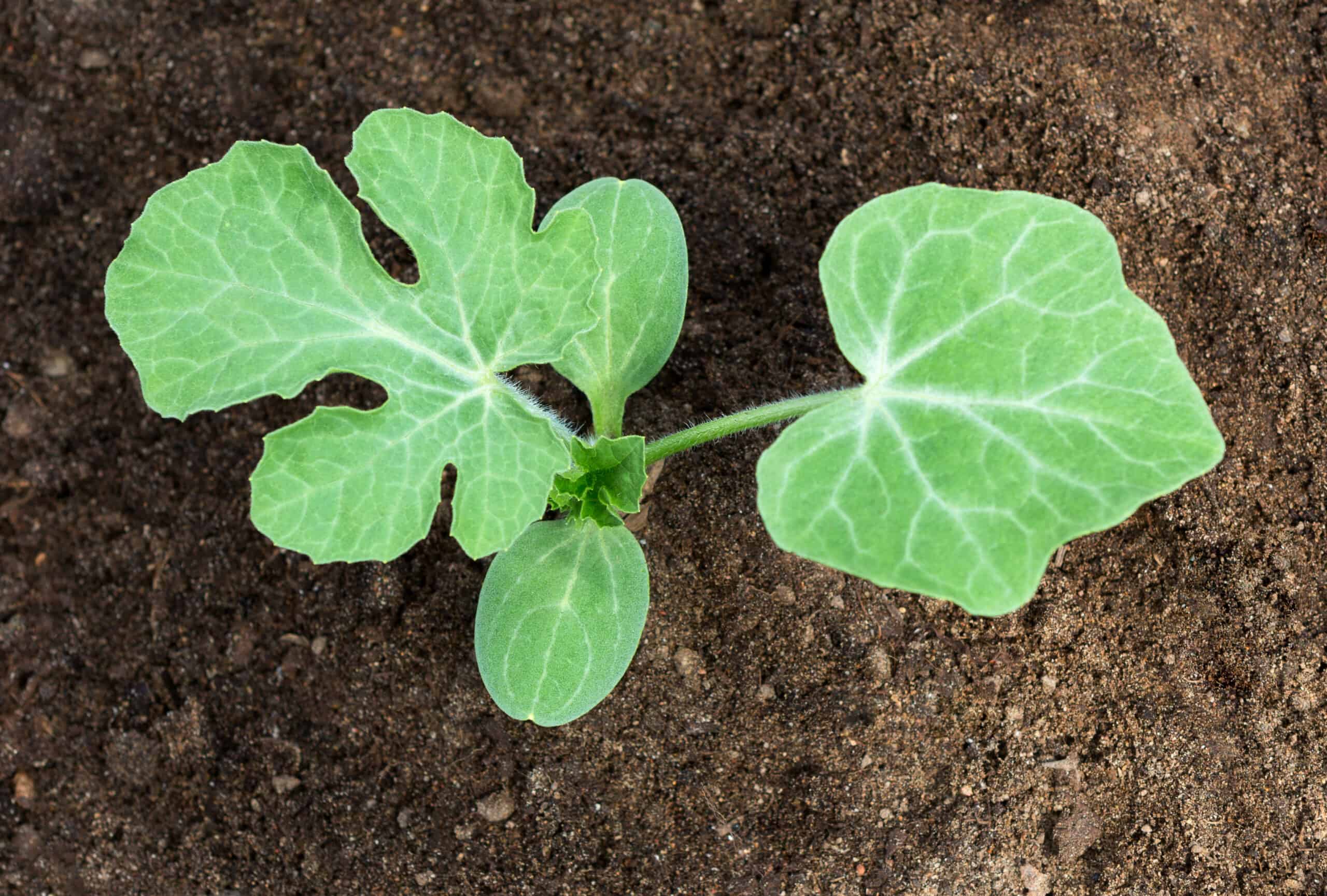
Watermelon recommended varieties
- ‘Sugar Baby’ and ‘Sugar Bush’ are small, 8-10 pounds.
- ‘Fiesta’, ‘Regency’, and ‘Sangria’ are 20 to 25 pounds—all are very sweet.
About watermelon
- Common name: Watermelon
- Botanical name: Citrullus lanatus
- Family: Cucurbitaceae
- Life cycle: Annual
- Fruit type: Berry
Botanical Name: Citrullus lanatus var. lanatus
Melons are a member of the Cucurbitaceae family; other cucurbits are cucumbers, squash, watermelon, and pumpkins.
More tips: How to Grow Watermelon
Melon articles at Harvest to Table:
How to Plant and Grow Watermelon
How to Harvest and Store Melons
How to Harvest and Store Watermelon
Melons Growing Problems Troubleshooting
Serve Watermelon With These Flavor Matches



